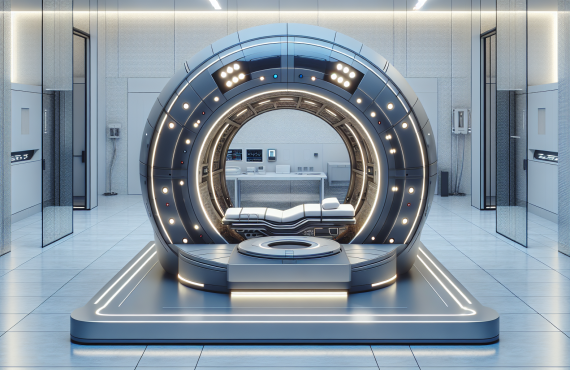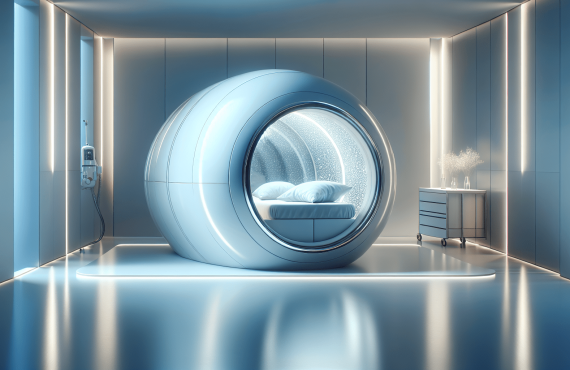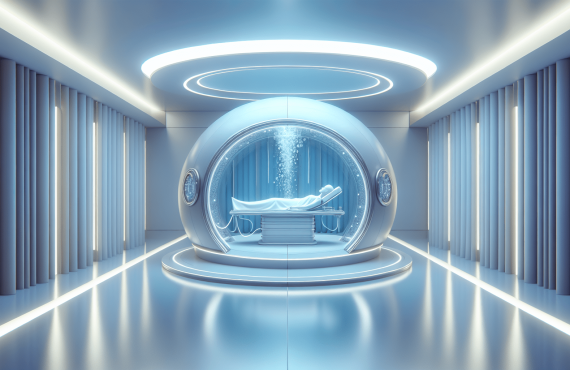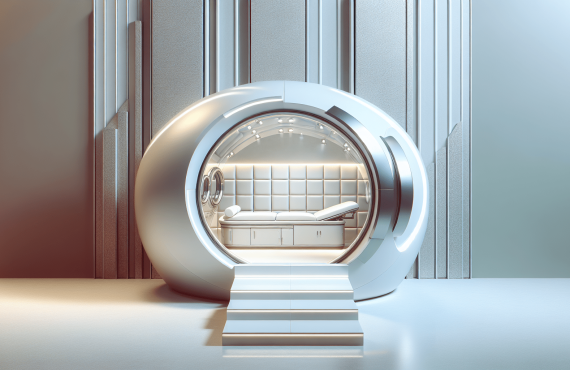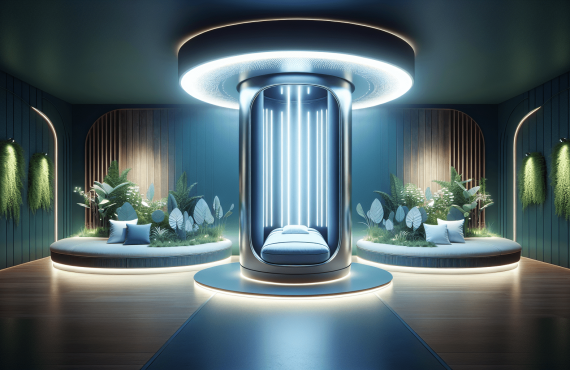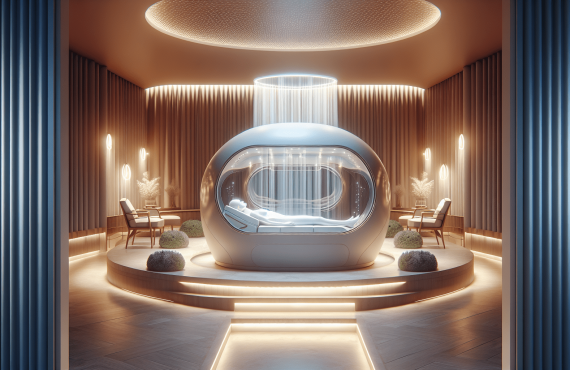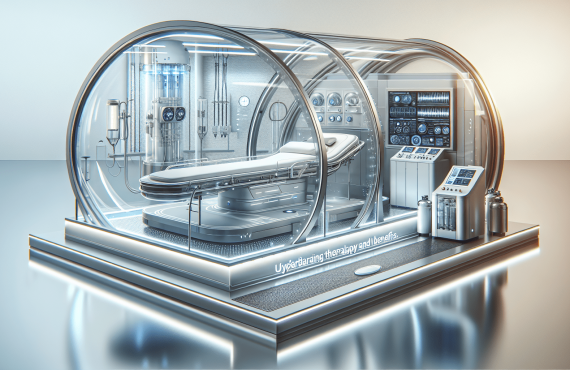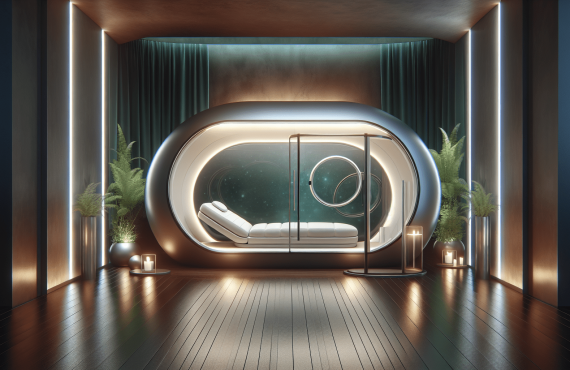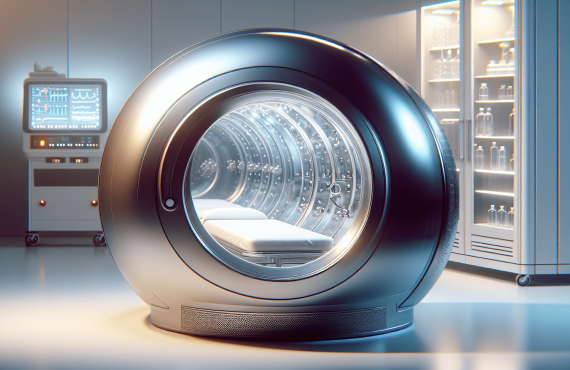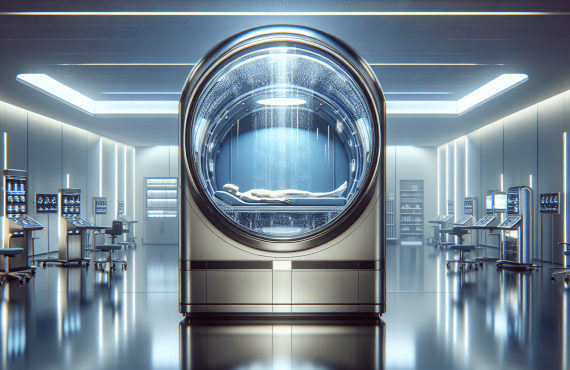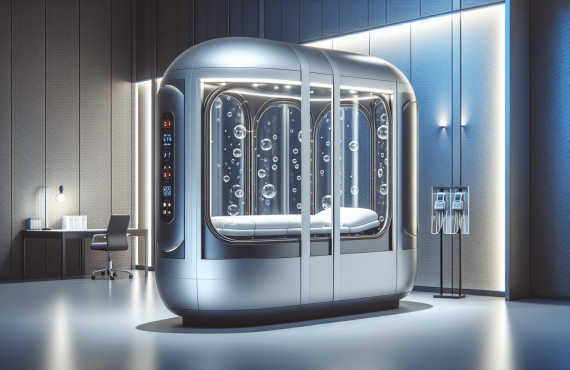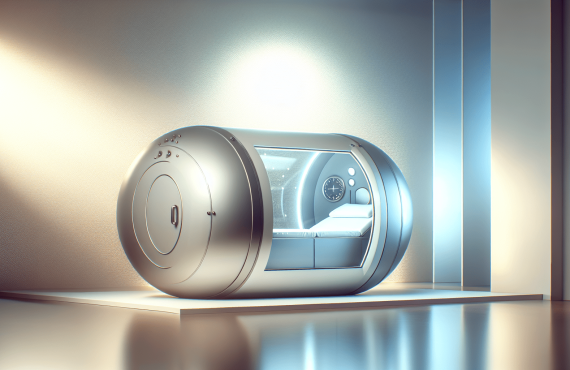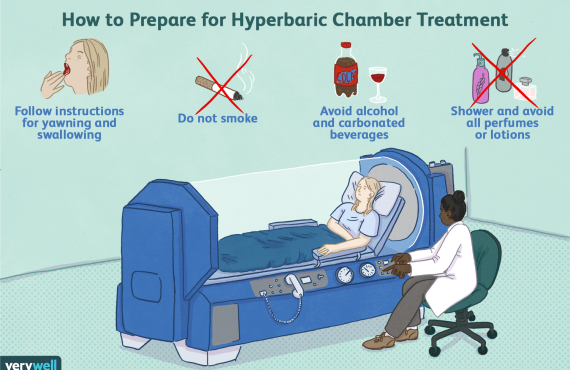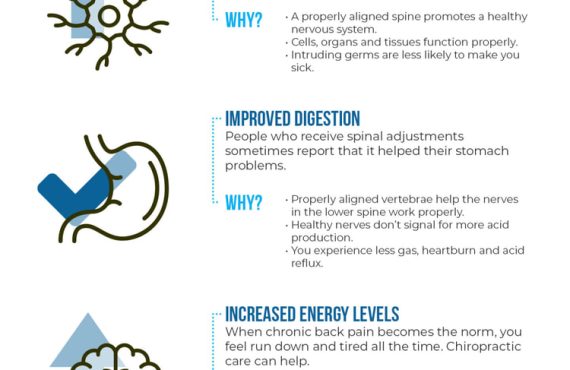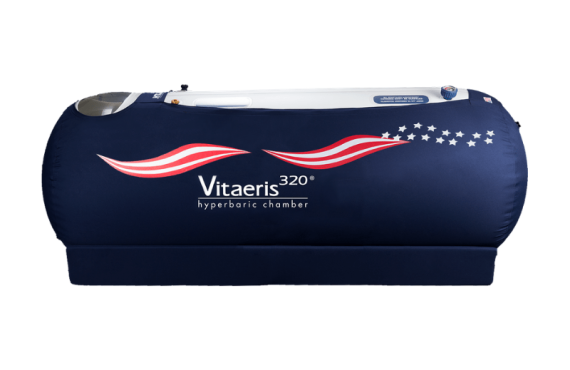Are you looking for a cutting-edge therapy that can provide numerous benefits to your health and well-being? Look no further than Hyperbaric Therapy in the Vitaeris 320 chamber. This innovative therapy involves immersing yourself in a pressurized chamber, allowing your body to absorb pure oxygen at higher levels than atmospheric pressure. The results? Improved circulation, enhanced wound healing, reduced inflammation, and faster recovery from various health conditions. Discover how this incredible therapy can transform your life and promote overall wellness.
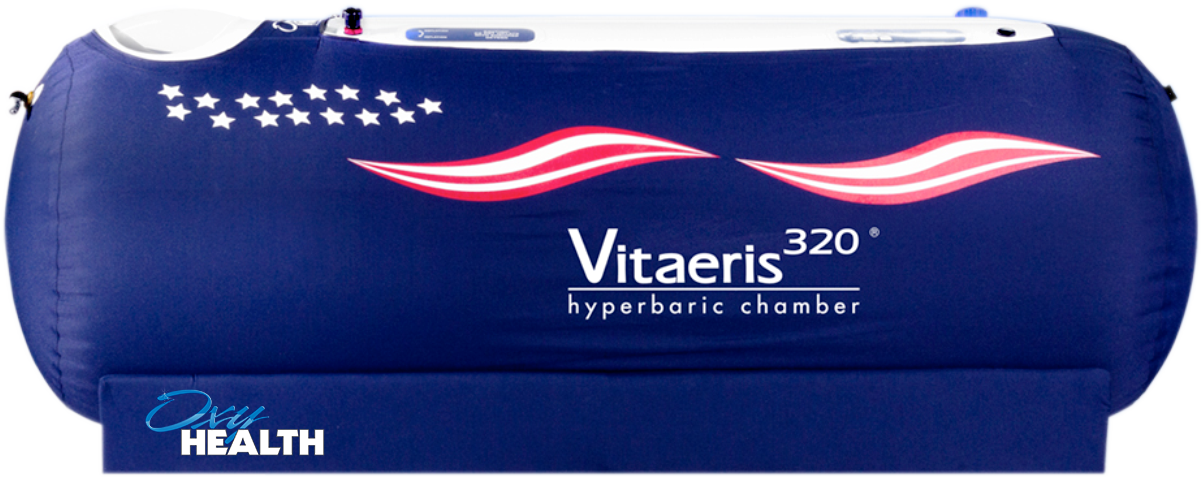
This image is property of www.oxyhealth.com.
Table of Contents
What is Hyperbaric Therapy?
Hyperbaric Therapy, also known as hyperbaric oxygen therapy (HBOT), is a medical treatment that involves breathing pure oxygen in a pressurized environment, typically in a specially designed chamber. This therapy is based on the principle that increasing the pressure and concentration of oxygen in the body can have various health benefits.
Definition
Hyperbaric therapy involves the administration of 100% oxygen at pressures higher than atmospheric pressure. By breathing pure oxygen in a hyperbaric chamber, the oxygen content in the blood and tissues significantly increases, allowing for enhanced healing and therapeutic effects.
How it works
Under normal atmospheric pressure, our lungs extract oxygen from the air and deliver it to the body’s tissues through the bloodstream. However, by increasing the pressure in a hyperbaric chamber, the concentration of oxygen in the bloodstream increases dramatically. This elevated level of oxygen dissolves into the plasma, reaching areas of the body that might have limited oxygen supply under normal conditions.
When the oxygen-rich blood reaches these areas, it stimulates the body’s natural healing processes, promotes tissue repair, reduces inflammation, and enhances immune function. This increased availability of oxygen also helps in the growth of new blood vessels, known as angiogenesis, which plays a crucial role in wound healing and tissue regeneration.
History of Hyperbaric Therapy
The history of hyperbaric therapy dates back to the late 1800s when it was initially used to treat decompression sickness in divers. Over time, it became evident that hyperbaric oxygen could provide benefits beyond decompression sickness, and its applications expanded to various medical conditions, including non-healing wounds, carbon monoxide poisoning, radiation damage, and more. Advances in technology, such as the development of the Vitaeris 320 Chamber, have further revolutionized the field of hyperbaric therapy, making it more accessible and effective than ever before.
The Vitaeris 320 Chamber
The Vitaeris 320 Chamber is a state-of-the-art hyperbaric chamber specifically designed to provide a safe and comfortable environment for hyperbaric therapy. It is a spacious, cylindrical chamber that can accommodate one or more individuals, depending on the specific needs of the patient or treatment protocol.
Features and design
The Vitaeris 320 Chamber is equipped with advanced technology and features to ensure optimal treatment outcomes. It is built with clear acrylic material, allowing for easy monitoring of the patient during the session. The chamber is pressurized using specially designed air compressors, and the pressure can be adjusted according to the individual’s needs.
Inside the chamber, the patient can relax on a comfortable recliner or stretches out on a padded bed. The chamber is well-lit, providing a pleasant and calming environment during the treatment session. It is also equipped with a communication system, allowing the patient to stay connected with the outside world and the healthcare professionals overseeing the treatment.
Benefits of the Vitaeris 320 Chamber
The Vitaeris 320 Chamber offers several benefits for patients undergoing hyperbaric therapy. Its spacious design allows for comfortable positioning, ensuring that the patient can relax and make the most of their treatment sessions. The clear acrylic material provides a sense of openness, reducing any feelings of claustrophobia or anxiety that some individuals may experience.
The advanced pressure control mechanisms of the Vitaeris 320 Chamber enable precise adjustment of the pressure levels, ensuring optimal treatment outcomes for a wide range of medical conditions. The communication system within the chamber allows patients to communicate easily with the healthcare professionals overseeing their treatment, providing reassurance and support throughout the session.
Conditions Treated with Hyperbaric Therapy
Hyperbaric therapy has shown promising results in the treatment of various medical conditions. Here are some of the conditions that can benefit from hyperbaric therapy:
Wound healing
Hyperbaric therapy has been widely utilized as an adjunctive therapy for the treatment of non-healing wounds. By increasing the availability of oxygen to the wound site, hyperbaric therapy promotes tissue repair, accelerates wound healing, and reduces the risk of infections.
Carbon monoxide poisoning
Carbon monoxide poisoning can lead to severe oxygen deprivation in the body, potentially causing neurological damage and even death. Hyperbaric therapy helps to rapidly eliminate carbon monoxide from the bloodstream, restoring oxygen levels and preventing further harm.
Radiation damage
Individuals who have undergone radiation therapy may experience long-term side effects such as tissue damage and delayed wound healing. Hyperbaric therapy has been shown to enhance tissue healing and reduce radiation-induced complications by stimulating angiogenesis and promoting the growth of healthy tissue.
Stroke recovery
Hyperbaric therapy has been investigated as a potential treatment for stroke recovery. By increasing oxygen delivery to the affected brain tissue, hyperbaric therapy may improve neurological function, reduce disability, and enhance the recovery process for stroke survivors.
Burns
Serious burns can cause tissue damage and impair wound healing. Hyperbaric therapy can help in burn treatment by increasing oxygen availability, promoting tissue repair, and reducing the risk of infection, thus improving outcomes and reducing scarring.
Infections
Certain types of infections, such as necrotizing soft tissue infections, can be life-threatening and require prompt and aggressive treatment. Hyperbaric therapy can be used as an adjunctive treatment to support antibiotics and surgical interventions, improving the oxygenation of infected tissues and helping to combat the infection.
Autism
Hyperbaric therapy has been explored as a complementary therapy for individuals with autism spectrum disorder (ASD). While the evidence is still limited, some studies suggest that hyperbaric therapy may improve certain symptoms associated with ASD, such as social interaction, communication, and behavior.
Traumatic brain injury
Traumatic brain injury (TBI) can result in long-lasting neurological deficits and impaired cognitive function. Hyperbaric therapy has shown potential in improving the outcome of TBI by increasing oxygen supply to the injured brain tissue, reducing inflammation, and promoting neuroplasticity.
Sports injuries
Athletes often experience injuries that can significantly impact their performance and recovery. Hyperbaric therapy has been used in the management of sports injuries to accelerate healing, reduce downtime, and enhance tissue repair, allowing athletes to return to peak performance more quickly.
Post-operative healing
After certain surgical procedures, some individuals may experience delayed wound healing or complications. Hyperbaric therapy can facilitate healing, reduce the risk of infection, and improve overall surgical outcomes by enhancing oxygenation and promoting tissue repair.
Mechanisms of Action
Hyperbaric therapy exerts its therapeutic effects through various mechanisms. Understanding these mechanisms can shed light on the rationale behind its effectiveness in treating different conditions.
Oxygenation
The primary mechanism of hyperbaric therapy involves increasing the concentration of oxygen in the bloodstream. By breathing 100% oxygen under increased pressure, the oxygen dissolves into the plasma, surpassing the oxygen-carrying capacity of red blood cells. This oxygen-rich plasma can then reach areas with compromised or limited blood flow, ensuring adequate oxygenation to support healing and tissue repair.
Increased pressure
The pressurized environment of the hyperbaric chamber enhances the absorption of oxygen in the lungs and promotes the delivery of oxygen to the tissues. The increased pressure also helps to shrink gas bubbles, such as those formed during decompression sickness or following certain medical procedures, reducing the risk of complications and facilitating their elimination.
Stimulation of angiogenesis
Angiogenesis refers to the formation of new blood vessels, a process crucial for wound healing and tissue regeneration. Hyperbaric therapy has been shown to stimulate angiogenesis by promoting the release of growth factors and increasing the oxygen availability in the affected tissues. This enhanced blood vessel growth supports the delivery of oxygen and nutrients, facilitating the healing process.
Reduced inflammation
Inflammation plays a significant role in many medical conditions, and excessive or prolonged inflammation can hinder healing and impair tissue function. Hyperbaric therapy has been observed to reduce inflammation by suppressing pro-inflammatory signaling pathways, modulating immune responses, and promoting the removal of inflammatory mediators, allowing for a more favorable environment for healing.
Improved immune function
The immune system plays a vital role in fighting infections and promoting tissue repair. Hyperbaric therapy has been shown to enhance immune function by increasing the production and activation of immune cells, promoting the clearance of bacteria and toxins, and improving the ability of the immune system to recognize and respond to threats.
Enhanced tissue repair
Hyperbaric therapy promotes tissue repair by encouraging the production of collagen, a protein essential for wound healing and tissue regeneration. The increased oxygen availability supports the synthesis of collagen, leading to improved tissue strength and integrity. Additionally, hyperbaric therapy can stimulate the production of other growth factors and stem cells, further enhancing tissue repair processes.
Neurological effects
Hyperbaric therapy has shown promising neurological effects, particularly in conditions such as stroke, traumatic brain injury, and autism. The increased oxygen delivery to the brain tissue, coupled with the other mechanisms mentioned above, can promote neuroplasticity, enhance brain repair processes, and improve cognitive function and neural connectivity.
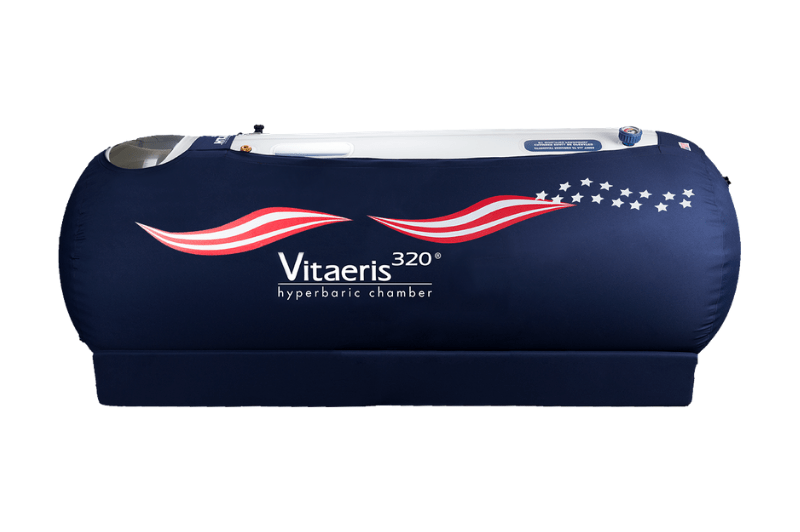
This image is property of www.oxyhealth.eu.
Safety Considerations
Hyperbaric therapy, when administered under appropriate conditions, is generally safe and well-tolerated. However, certain safety considerations must be taken into account to ensure optimal patient outcomes and minimize potential risks.
Screening process
Before undergoing hyperbaric therapy, individuals undergo a thorough screening process to assess their suitability for treatment. This includes evaluating medical history, current health status, and any potential contraindications or risks that could affect the safety and effectiveness of the treatment.
Potential risks and side effects
While hyperbaric therapy is considered safe, there are some potential risks and side effects that patients should be aware of. These can include barotrauma (injury due to pressure changes), oxygen toxicity, ear and sinus discomfort, and mild changes in vision. However, these side effects are relatively rare and can be minimized or managed with proper monitoring and precautions.
Contraindications
Some medical conditions or situations may contraindicate or require caution when considering hyperbaric therapy. These can include certain lung conditions, untreated pneumothorax, recent ear or sinus surgery, untreated seizures, and pregnancy. It is essential to consult with a healthcare professional to determine if hyperbaric therapy is appropriate and safe for an individual’s specific circumstances.
Supervision and monitoring
During hyperbaric therapy sessions, patients are closely supervised by trained healthcare professionals who monitor vital signs, assess overall well-being, and ensure the treatment remains safe and effective. The presence of professionals ensures prompt management of any potential complications or adverse reactions.
Training and certification for operators
The proper operation of hyperbaric chambers requires specialized training and certification for the healthcare professionals responsible for overseeing the treatment. This ensures that the treatment is administered safely and effectively, following established protocols and guidelines.
Proper chamber maintenance
Regular maintenance and inspection of hyperbaric chambers are essential to ensure their safe and reliable operation. Chambers must be well-maintained, cleaned, and checked for integrity to prevent any potential risks or malfunctions that could compromise patient safety.
Research and Evidence
Hyperbaric therapy has been the subject of numerous clinical trials, studies, and research initiatives. While the evidence for its effectiveness is strongest in certain conditions, ongoing research continues to explore its potential benefits and applications.
Clinical trials and studies
Numerous clinical trials have investigated the efficacy of hyperbaric therapy in different medical conditions. Studies have demonstrated its effectiveness in wound healing, radiation-induced complications, carbon monoxide poisoning, and certain neurological conditions. These trials have provided valuable insights into the mechanisms of action and the specific parameters needed for optimal therapeutic outcomes.
Current and emerging research
Ongoing research in the field of hyperbaric therapy continues to explore new applications and therapeutic targets. Current studies are investigating its potential benefits in conditions such as traumatic brain injury, stroke, sports injuries, and autism. Emerging research aims to uncover the molecular mechanisms underlying hyperbaric therapy and identify novel targets for intervention and treatment.
Areas of ongoing investigation
Research in hyperbaric therapy is a continually evolving field, with several areas of ongoing investigation. Some of these areas include optimizing treatment protocols, determining the dosage and duration of therapy, identifying specific molecular targets, and exploring potential synergies with other treatments or interventions. The ongoing research aims to further refine and expand the applications of hyperbaric therapy, ensuring its continued value in medical practice.
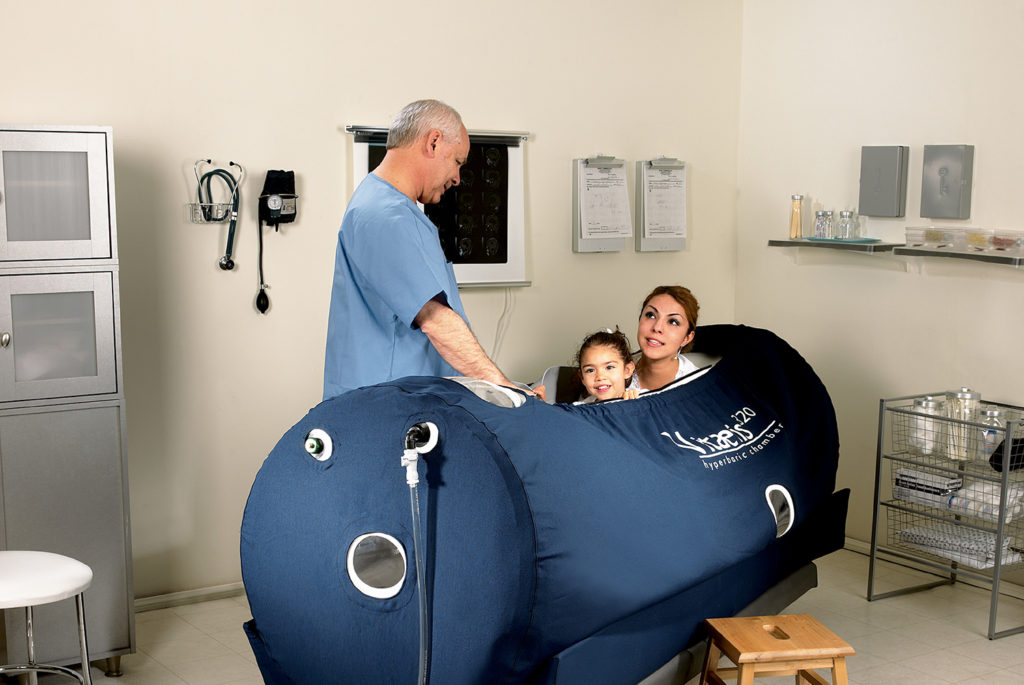
This image is property of oxylifehyperbarics.com.
Cost and Accessibility
The cost and accessibility of hyperbaric therapy can vary depending on various factors such as location, healthcare system, and insurance coverage. It is essential to consider these factors when evaluating the feasibility and affordability of hyperbaric therapy.
Insurance coverage
Insurance coverage for hyperbaric therapy varies among different insurance providers and policies. Some insurance plans may offer coverage for specific medical conditions or indications, while others may have partial or limited coverage. It is advisable to consult with the insurance provider to understand the extent of coverage and any potential out-of-pocket expenses.
Affordability and availability
The cost of hyperbaric therapy sessions can vary significantly depending on the geographic location and the specific clinic or facility. It is essential to research different options and compare prices to determine the most affordable and accessible option. Additionally, consider factors such as the proximity of the facility, availability of appointments, and reputation of the clinic in delivering high-quality care.
Clinics and facilities offering hyperbaric therapy
Hyperbaric therapy is offered in specialized clinics and healthcare facilities that have the necessary equipment and expertise. When considering hyperbaric therapy, it is crucial to choose a reputable and accredited facility that adheres to established safety protocols and has qualified healthcare professionals overseeing the treatment.
Patient Experiences
The experiences of patients who have undergone hyperbaric therapy can provide valuable insights into its effectiveness and impact on their overall well-being. Here are some examples of patient experiences:
Testimonials
Numerous patients have provided testimonials highlighting the positive effects of hyperbaric therapy on their health and quality of life. These testimonials often describe accelerated wound healing, improvements in neurological function, enhanced energy levels, and reduced pain and inflammation. Reading or listening to these firsthand experiences can provide reassurance and hope for individuals considering hyperbaric therapy.
Success stories
Many success stories have emerged from individuals who have undergone hyperbaric therapy for various conditions. These stories may showcase remarkable recoveries from complex wounds, improved cognitive function following traumatic brain injury, and enhanced quality of life for individuals with autism. Success stories inspire and motivate patients, indicating that hyperbaric therapy can be a valuable and effective treatment option.
Case studies
Case studies are frequently published in medical literature, offering detailed insights into the outcomes of hyperbaric therapy for specific patients and conditions. These case studies provide valuable and individualized information on treatment protocols, outcomes, and potential challenges, allowing healthcare professionals and patients to gain a deeper understanding of the therapeutic potential of hyperbaric therapy.

This image is property of img1.wsimg.com.
Complementary Therapies
Hyperbaric therapy can be used in conjunction with other treatments or therapies to enhance its effectiveness and provide holistic care. Here are some examples of complementary therapies that can be used alongside hyperbaric therapy:
Combining hyperbaric therapy with other treatments
Hyperbaric therapy can complement various other therapies, such as wound care, surgery, antibiotic treatment, or radiation therapy. By combining hyperbaric therapy with these treatments, the overall healing process can be accelerated, and outcomes can be optimized. The specific combination of therapies recommended will depend on the individual’s condition and the advice of the healthcare professional.
Supportive therapies during hyperbaric sessions
During hyperbaric therapy sessions, individuals may engage in supportive therapies to enhance relaxation, promote well-being, and maximize the therapeutic benefits. These supportive therapies can include music therapy, aromatherapy, meditation, guided imagery, or counseling. These adjunctive therapies can help individuals feel more comfortable, reduce anxiety, and create a positive healing environment.
Future Developments
The field of hyperbaric therapy is continually evolving, with ongoing research and advancements in technology. Here are some of the future developments that hold promise for the field:
Advancements in hyperbaric technology
Advancements in hyperbaric technology are aimed at improving the safety, effectiveness, and convenience of hyperbaric therapy. These advancements may include innovations in chamber design, pressure control mechanisms, monitoring systems, and communication interfaces. Such developments can enhance the patient experience, facilitate personalized treatments, and expand the applications of hyperbaric therapy.
Potential new applications for hyperbaric therapy
Research continues to explore new applications and therapeutic targets for hyperbaric therapy. As our understanding of the physiological and molecular effects of hyperbaric therapy expands, potential new areas of application may emerge. These may include conditions such as Alzheimer’s disease, chronic pain, neurological disorders, and even anti-aging interventions. Future developments in hyperbaric therapy hold the potential to provide valuable treatment options for a wide range of medical conditions.
In conclusion, hyperbaric therapy, particularly in the Vitaeris 320 Chamber, offers numerous benefits for individuals with various medical conditions. By increasing the concentration of oxygen and the pressure in a pressurized environment, hyperbaric therapy promotes tissue repair, accelerates wound healing, reduces inflammation, enhances immune function, and supports neurological recovery. With ongoing research and advancements in technology, hyperbaric therapy holds promise for a range of conditions and offers potential new avenues for treatment. As guidelines and protocols continue to be refined, hyperbaric therapy’s accessibility and cost-effectiveness are likely to improve, ensuring that more individuals can benefit from this innovative and transformative treatment modality.

This image is property of miro.medium.com.



